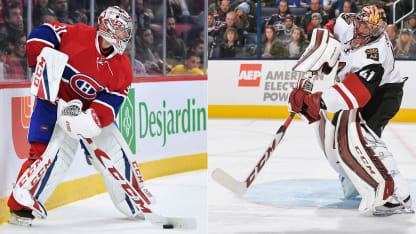Like a lot of goalies, Price was hesitant to move away from the more traditional blend of wood, fiberglass and foam core because of the feel associated with those sticks. What finally convinced him to switch? It was the knee injury that kept him out for most of last season and left him skating on his own, without goalie equipment but with a player's stick, during rehab.
"I'm not kidding, I used a player stick for two months [when he was injured] and I just got used to using a light stick," Price said. "Then when I started jumping back in net, I just used [his regular stick] and it felt heavy compared to a player stick. So I just thought that was the best time to switch."
Injury also played a role in Florida Panthers veteran Roberto Luongo switching to a composite stick late in the 2014-15 season. After 16 seasons using a foam core wood stick, Luongo tried composite when he was recovering from a broken bone in his right shoulder because it was lighter and felt his blocker was quicker with it.
"It gave me better range of motion," Luongo said. "I came back a week early because of the stick, and I'm still using it."
The weight difference between a composite stick and a traditional foam core wood stick can be anywhere from 100 to 250 grams, depending on the brands.
"It felt so light," said Toronto Maple Leafs No. 1 goaltender Frederik Andersen, who switched to a Bauer composite model last season. "The balance was different, but once I got used to it, it felt normal and natural. Now I don't know if I could ever switch back."


















